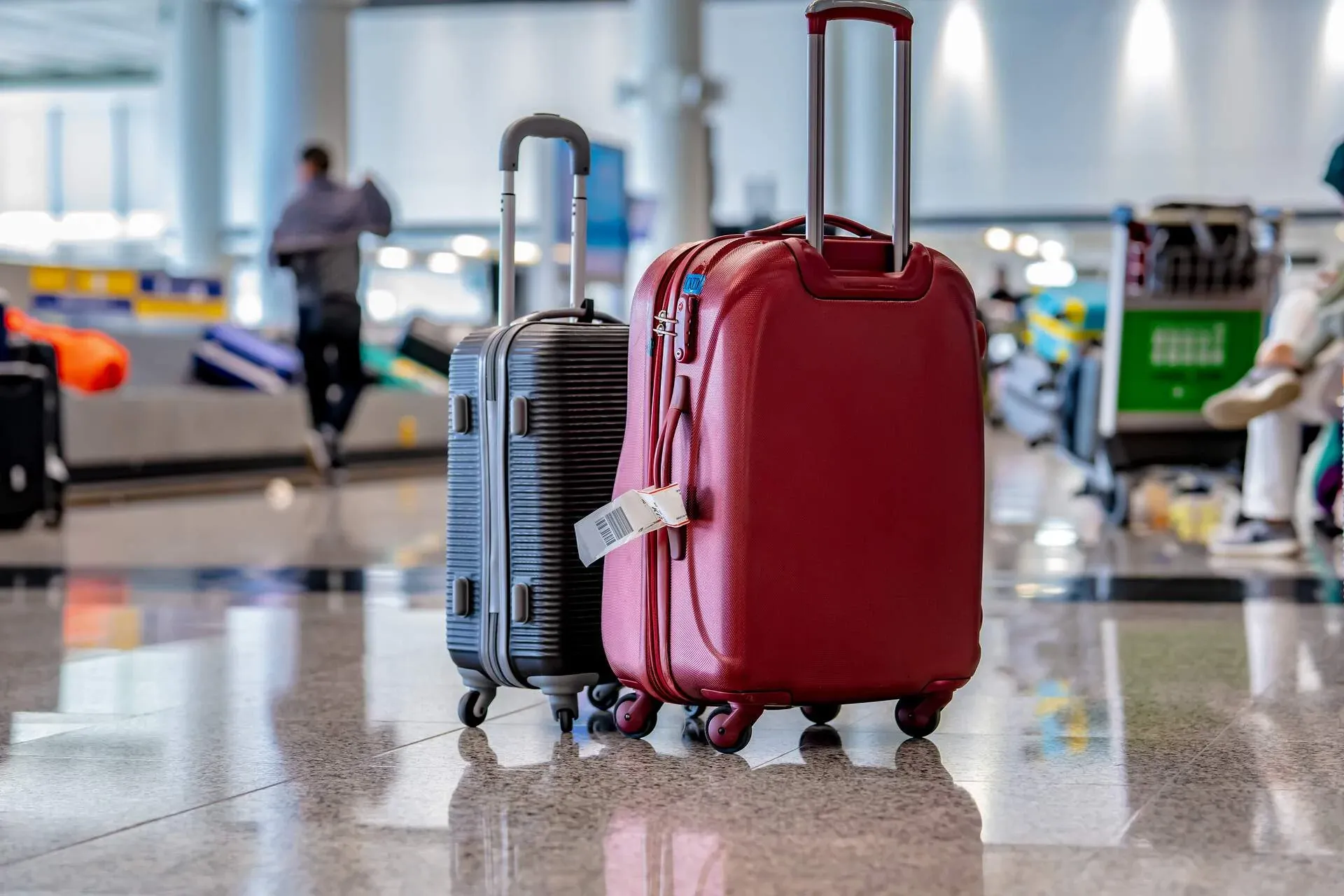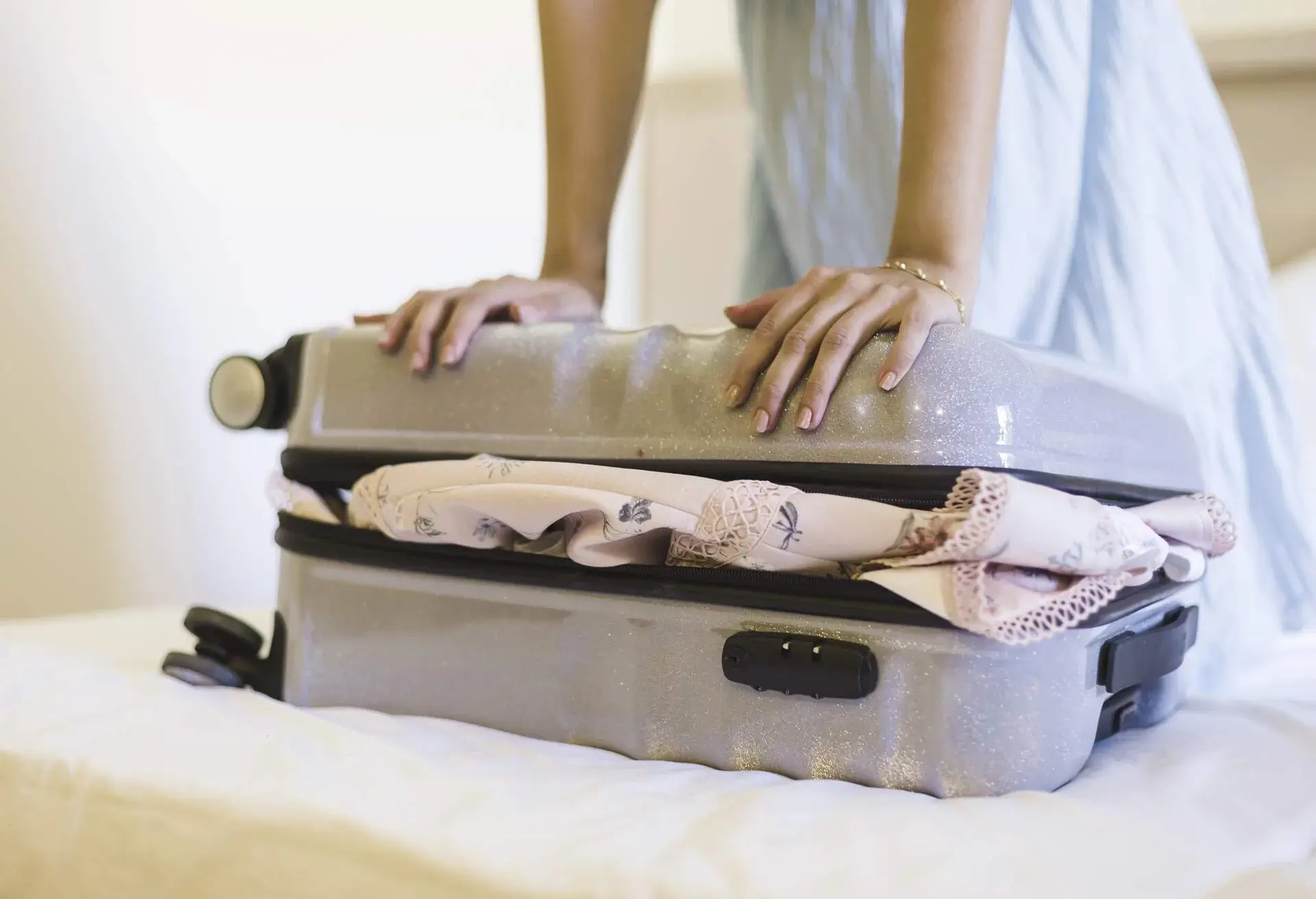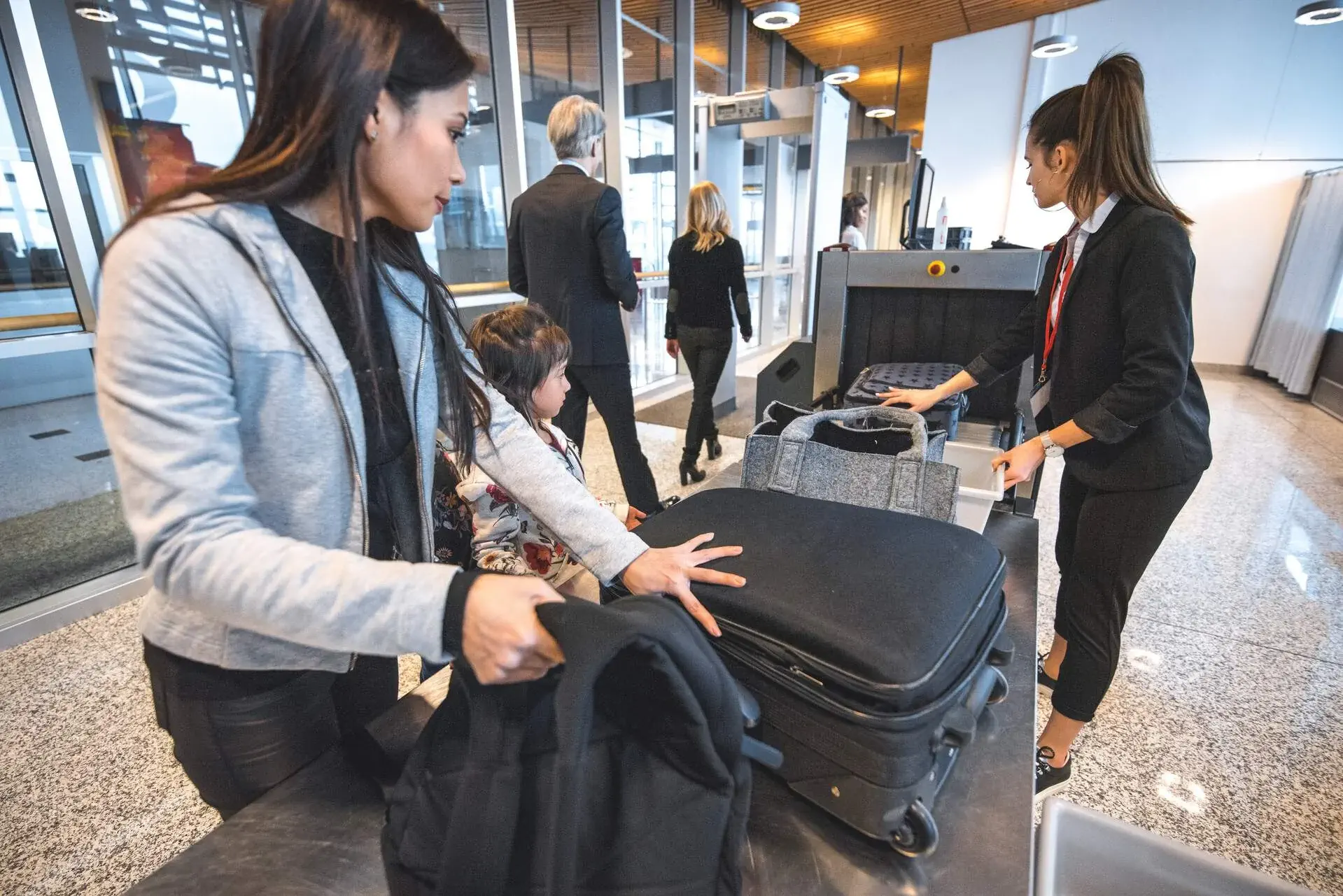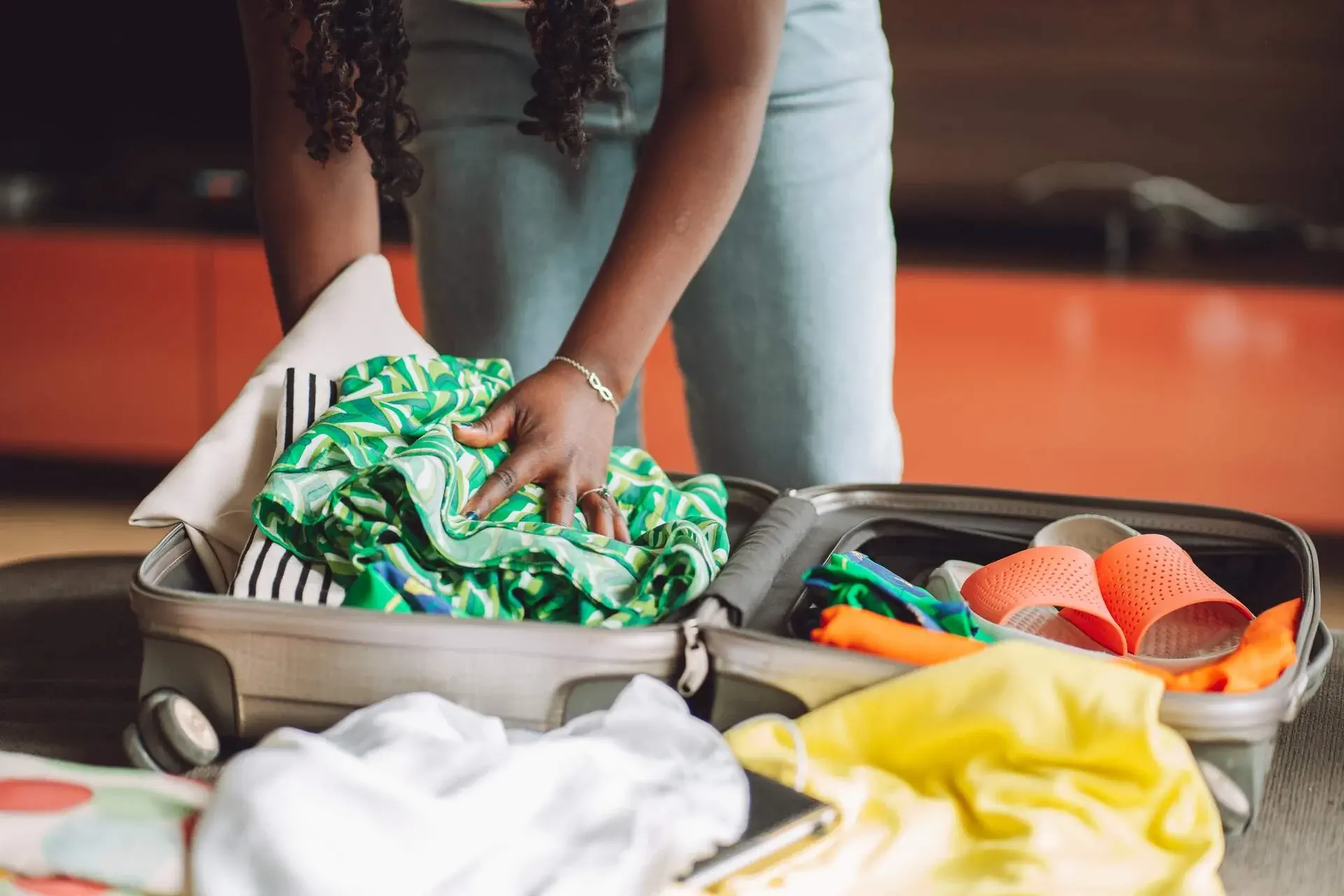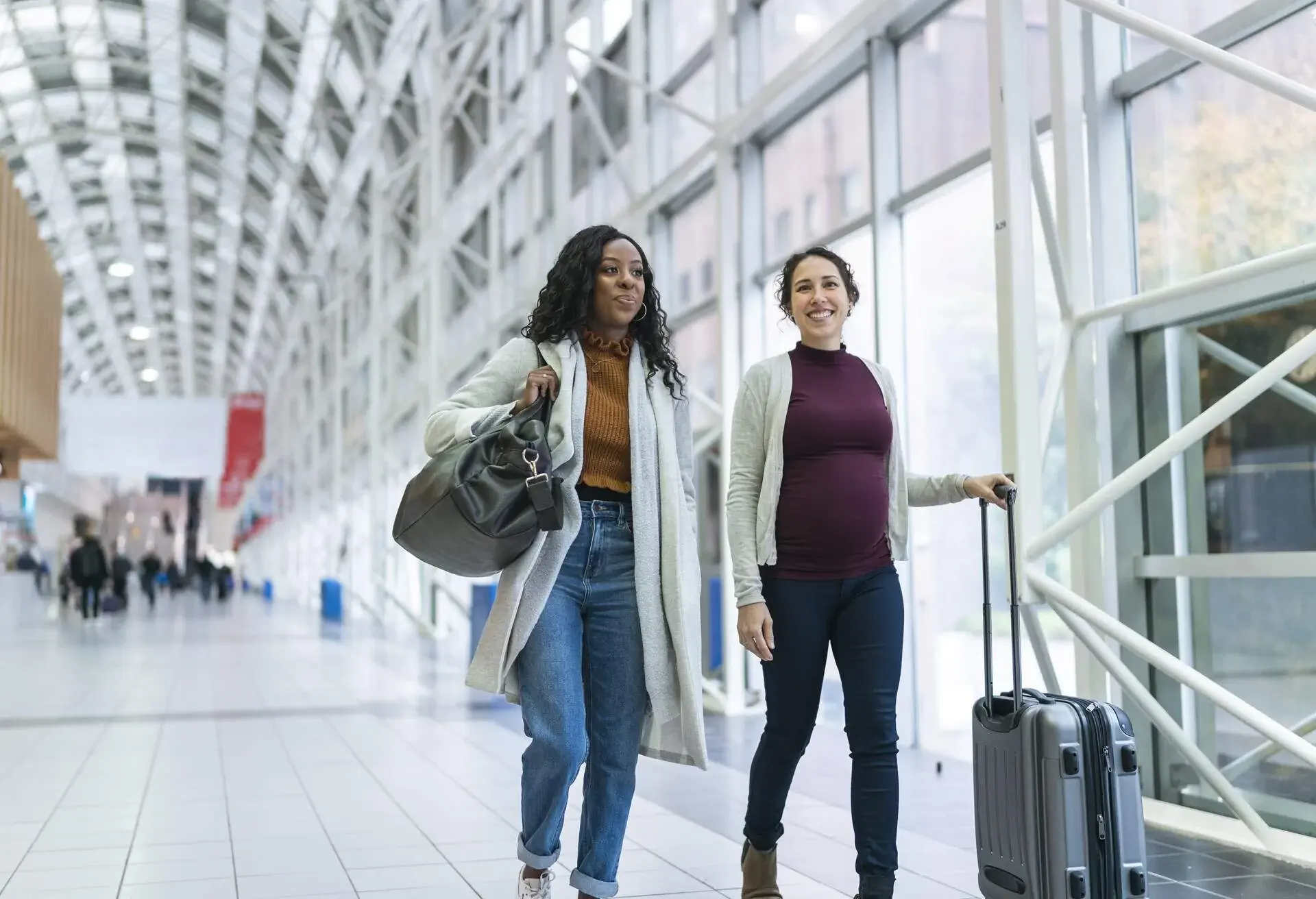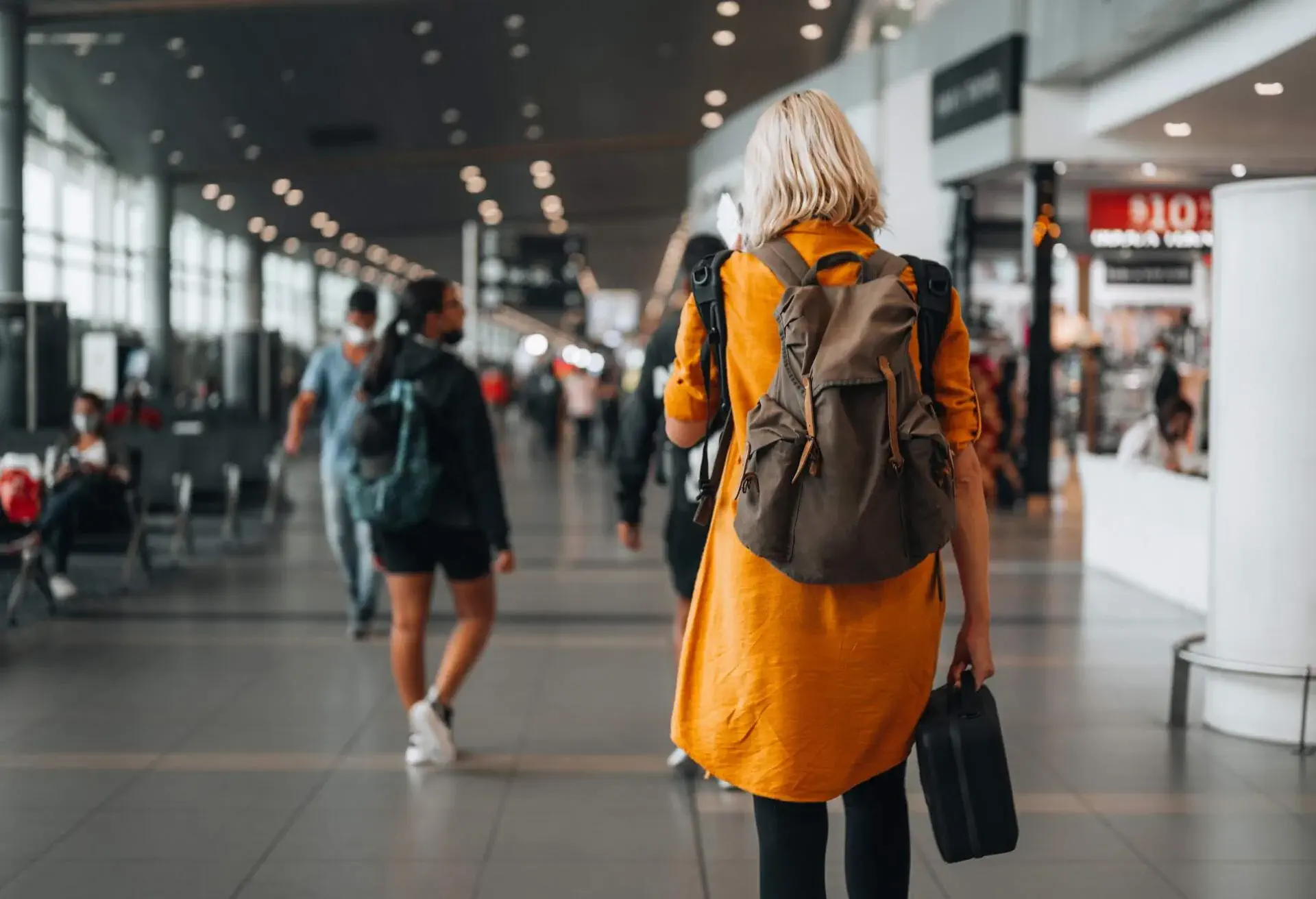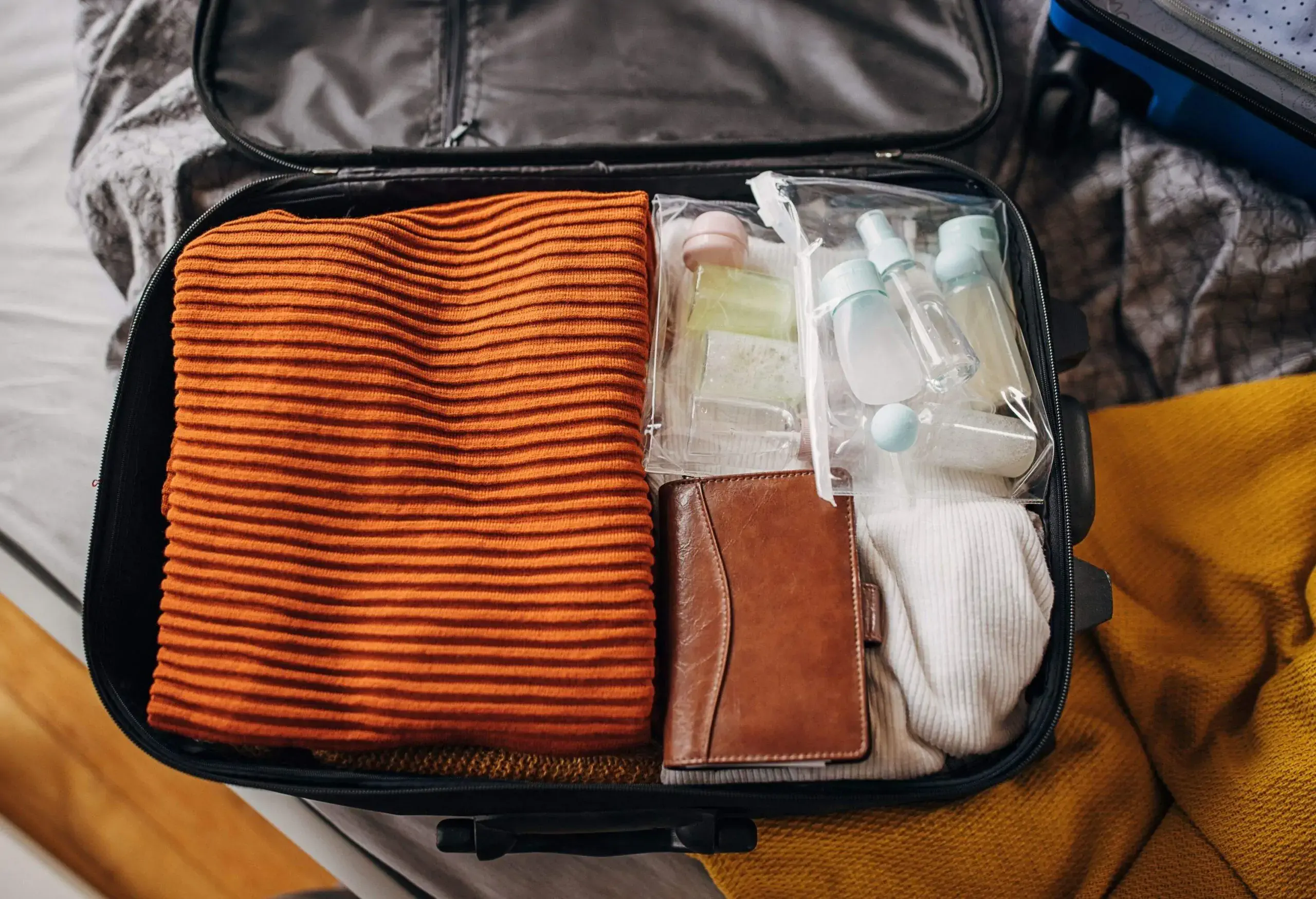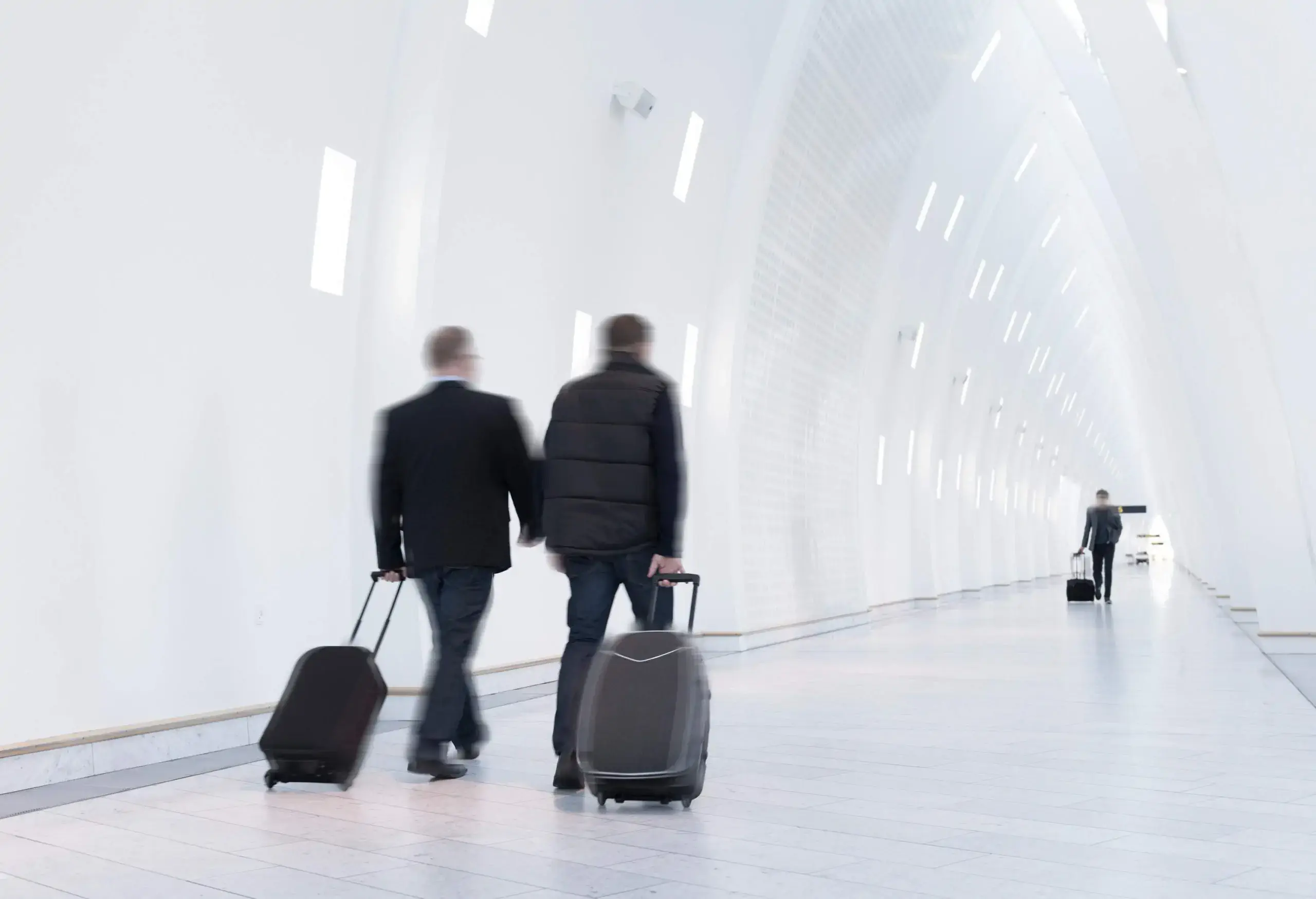The carry-on vs checked bag debate has long divided opinion. While both have their benefits and pitfalls, there’s no definitive right or wrong choice. Most likely any decision will be influenced by the trip you’re taking. Here, I explain the difference between a carry-on and checked bag, and the advantages and disadvantages of traveling with each. Full disclosure before I go any further: I’m firmly in the carry-on camp.
- What’s the difference between carry-on vs checked bags?
- How do I know if I need a carry-on or checked luggage?
- Which is faster?
- Which is better for traveling light?
- Can I trust airlines with my checked bags?
- Do I need things I can’t take in my carry-on bag?
- Which is cheaper?
- Carry-on vs checked bag, which should I take?
- FAQs
What’s the difference between carry-on vs checked bags?
Traveling with a carry-on or checked bag can have a big impact not just on your journey but your whole trip.
What is a carry-on bag?
The TSA also imposes restrictions on what you can take on board, important to be aware of before you pack. For everything you need to know about flying with carry-on luggage including size and weight limits, and airline policies, read my carry-on luggage size and weight guide.
What is a checked bag?
A checked bag is luggage that goes in the cargo hold of the plane, which means you don’t have access to it during your flight. At the check-in counter your bag will be weighed before disappearing along a conveyor belt into the bowels of the airport and (hopefully!) the cargo hold of your plane. Before you can check your bags in you’ll need to make sure they comply with the airline’s checked baggage rules.
Once you land at your destination, your checked luggage should be delivered to a carousel in the arrivals area, after you’ve gone through customs and passport checks. Checked luggage should arrive soon after you do, but depending on where you fly to and how efficient the baggage handlers are, you may have to wait longer.
While checked bags aren’t subject to as many restrictions as carry-on bags, there are still rules in place around size, weight and what you can pack.
What is the weight limit for a checked bag?
Weight limits for checked luggage vary from airline to airline and depend on which route you’re traveling and class you’re flying in.
Typically, the limit for an individual checked bag is 50 lbs (23 kg), with some business and first class tickets allowing you to carry two bags up to this weight. Airlines will also let you pay to check in oversized, overweight and excess baggage, although most have a limit of around 70 to 80 lbs (31 to 36 kg).
What is a standard size checked bag?
The dimensions for checked baggage vary from airline to airline so it’s always important to check with the airline you’re flying with. Typically, the standard size limit for a checked bag is 62 linear inches (158 cm). This means the measurements of your bag’s height, width and depth must not add up to more than 62 inches in total.
How do I know if I need a carry-on or checked bag?
The eternal travel question! The best way to choose between carry-on and checked bags is to decide what you need for your specific trip. It’s a juggling act of convenience versus cost versus capacity.
Where, when and for how long are you traveling? For a long beach weekend in the summer sun, a carry-on should be more than enough. If you’re hitting the slopes for a week of winter sports, checked bags give you room for your cold-weather kit. For more complex trips, there are plenty of other questions to ask yourself that will influence your decision.
Carry-on vs checked bag: which is faster?
Queuing comes as standard with any flight, but your luggage has a material impact on how much time you’ll spend waiting in line.
With checked bags, you’ll need to queue at the check-in desk before security and departure. In my experience this is often the slowest and worst staffed part of the airport. This means arriving earlier and waiting longer. Then at your destination you’ll need to wait for your bag to appear on the carousel which can, depending on where you’ve landed, take longer than you’d probably want.
With a carry-on bag those pain points are eliminated, as everything comes with you on the plane. For speed and convenience, carry-on trumps checked every time.
Carry-on vs checked bag: which is better for traveling light?
Opt for carry-on and it’s undoubtedly more effort dragging your bag everywhere around the airport (visiting the restroom can be particularly inconvenient). One reason, then, why roll-aboard cases have become so popular.
And now they are, there’s a strong argument to say carry-on is far better for traveling light. It enforces that lightness on you for your entire trip, not just the journey. It’s all well and good checking in your big, heavy bags at the airport, but that doesn’t help for the journey to and from it. Or for any in-between traveling you may be doing on your trip.
Expert tip: If you’re staying at a hotel, you don’t need to pack basic toiletries as they’ll be provided for you. Look for ways to save weight and space and you may not need to check in a bag!
Carry-on vs checked bag: can I trust airlines with my checked bags?
Check your bag in and you’re leaving it at the mercy of the airline. We’ve all seen videos of baggage handlers treating checked luggage like footballs. And many have heard stories about or been victims of delayed and disappearing bags.
The reality is that while statistics show your bag will arrive intact most of the time, losses and accidents do happen. If you’re checking your bag, make sure it’s secure, doesn’t have any valuables in it and that you have insurance. Or take a carry-on (though you should still have insurance)!
Expert tip: Put an AirTag in each bag you check in so you can track it through the airport and find it more easily should the worst happen and it gets delayed or lost on arrival.
Carry-on vs checked bag: do I need things I can’t take in my carry-on bag?
Checking a big bag that’s not full so you can bring it back bursting at the seams can save you money – you just need to plan in advance for it.
Expert tip: You can always transfer liquids from big bottles into smaller, carry-on approved containers before you fly. Lots of companies sell dedicated containers designed for just this purpose.
Carry-on vs checked bag: which is cheaper?
Fly domestically in the US and most of the time you won’t need to pay any extra for carry-on luggage. That can be a different story internationally though, especially if you’re flying with budget carriers in Europe or Asia.
Nowadays, almost all airlines charge for checked luggage. In the US, Southwest Airlines was the last airline to offer free checked bags with an economy ticket but has recently ended this policy for flights departing after May 2025. What you pay will depend on a variety of factors, from your ticket class to your airline miles and memberships.
Some airlines do include free checked bags on specific routes even with an economy ticket. This is usually for long-haul international flights, but means it’s always worth checking before paying extra.
KAYAK has a great breakdown of checked bag fees for all major airlines if you want a handy reference point. But even more useful is its Fee Assistant. Search for a flight on KAYAK and in the lefthand panel on the results page you’ll see the Fee Assistant. Add any checked or carry-on bags you want to take and the search results will immediately update to include the cost of adding your luggage. It’s a much simpler and safer way to know what you’re paying than trying to work it out yourself and compare between airlines.
Carry-on vs checked bag, which should I take?
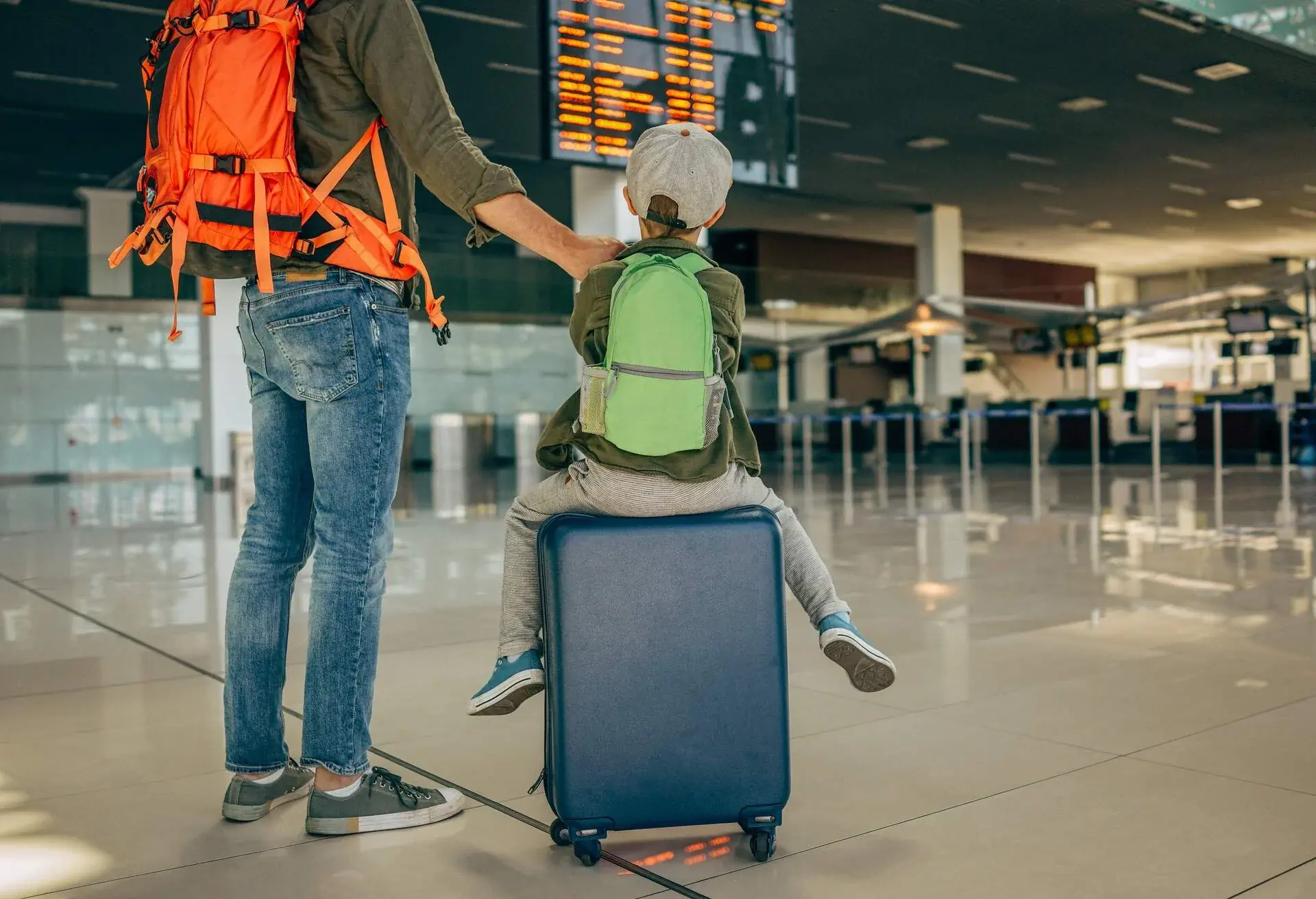
Hopefully you should have a pretty clear idea now on the pros and cons of carry-on vs checked bags, and can make a decision based on those factors. It all comes down to those three key ‘C’s’ – capacity, convenience and cost. For me, there’s no contest and I have no plans to join that check-in queue any time soon.
Carry-on vs checked bag FAQs
Not always. Some US airlines offer free carry-on bags no matter which type of fare you’re flying on, including Alaska, Delta, American and Hawaiian. Some offer free carry-on bags only with certain fare types, mostly excluding basic economy fares.
Your bags become the responsibility of the airline once you check them in at the airport. From the check-in desk, they’ll make their way through the labyrinth of conveyor belts, baggage handlers and transport vehicles to the cargo hold of your plane. Hopefully. This is where they’re stored for the flight, inaccessible to passengers. On landing, they’ll be transferred to the baggage claim in the arrivals hall, where you’ll be able to collect them.

